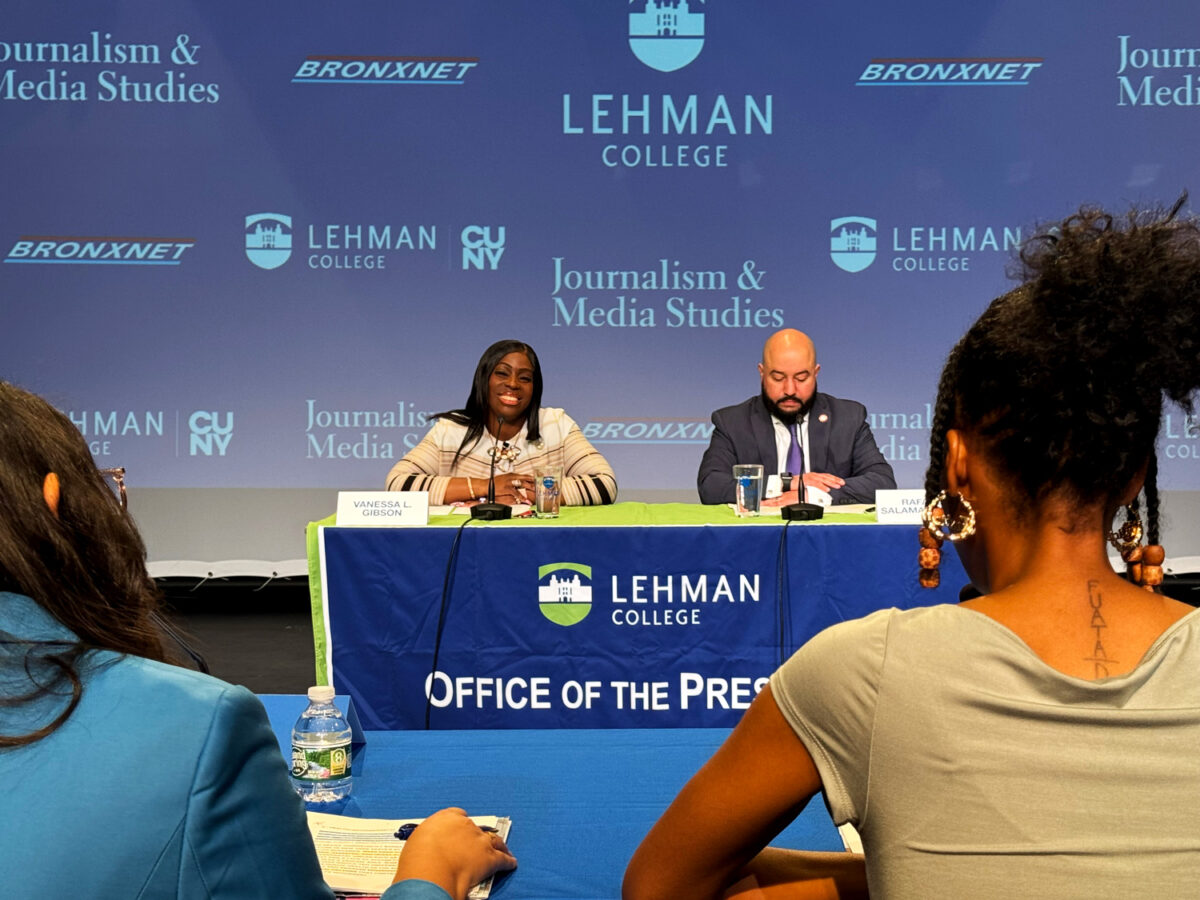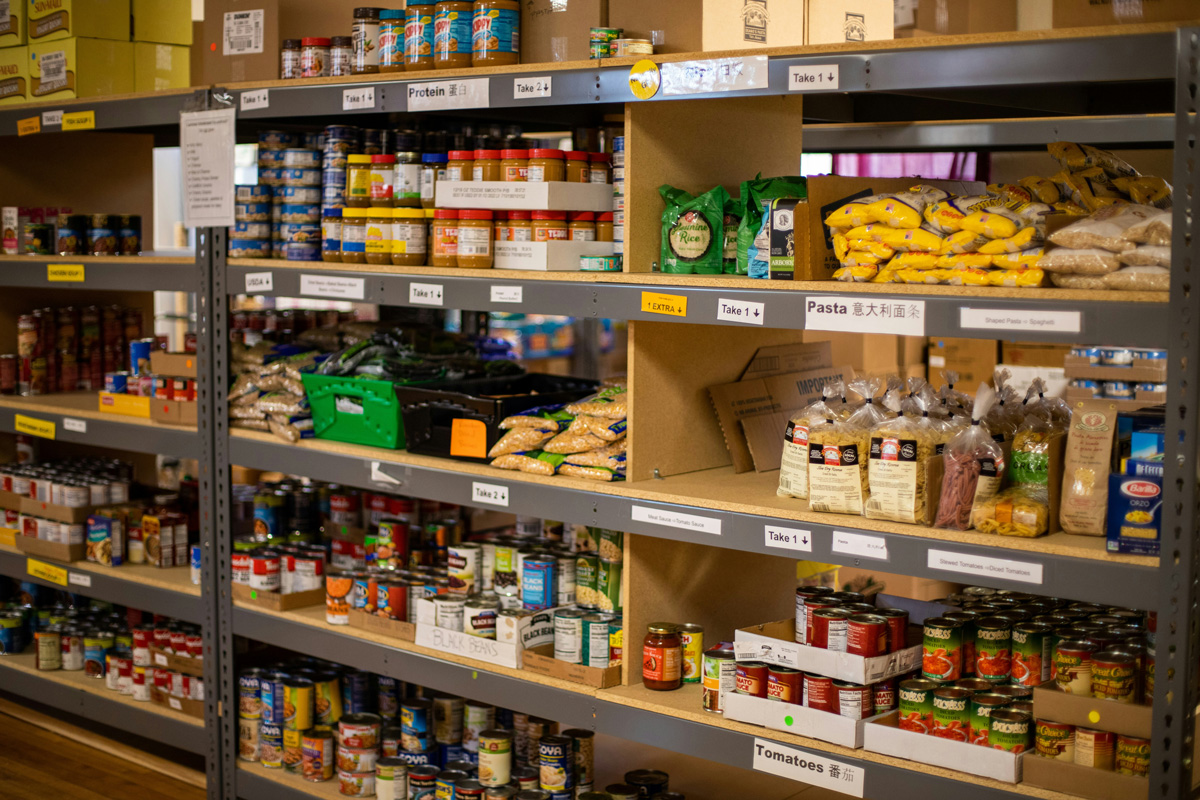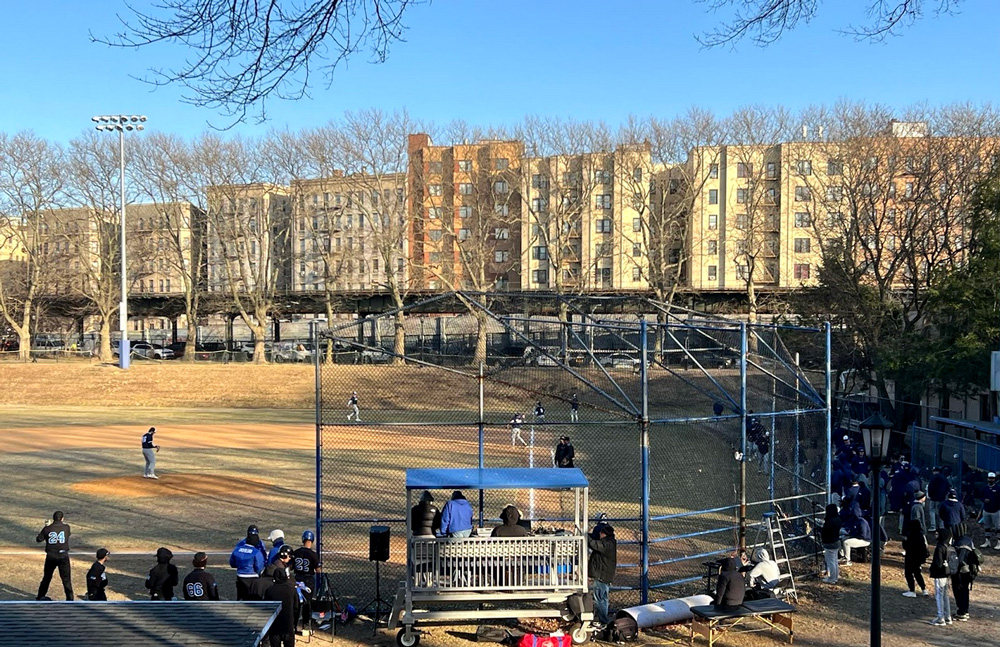
(Photo: Ulises Gonzalez)
By Andrea Diaz & Coralia Barrios
Bronx Journal Staff Writers
The South Bronx is home to major truck routes, several expressways, more than a dozen waste-transfer stations, the busiest meat and fish wholesale market and a junk-treatment plant.
And if you didn’t know, these are a few of the reasons why the Bronx has more air pollutants than the rest of the city – and why, according to new research, the Bronx has one of the highest asthma hospitalization rates in the United States.
According to a new study conducted by the Lehman College Geographic Information Sciences research team, there is a definite link between asthma hospitalization and air pollution in the Bronx.
The study, based on analysis, of asthma hospitalization in the Bronx, between 1995 and 1999, found that people living in close proximity to a major pollution source were 25 percent more likely to be hospitalized for asthma. That rate jumped to 34 percent for those living close to two or more major pollution sources.
“These numbers only account for the most severe asthma hospitalization cases,” said Geographer Dr. Juliana Maantay, who led the Lehman research team. “There are many asthma cases unaccounted for.”
A similar study conducted by New York University (NYU), monitored Bronx schoolchildren to measure their exposure to pollution and found that they were exposed to high levels of air pollutants in their neighborhoods, causing them respiratory problems.
NYU researchers also noticed that children in the South Bronx were twice as likely to attend a school near a highway as were children in other parts of the city. It means that Bronx kids are being exposed to very high fine-particle concentrations on a regular basis.
 The Lehman and NYU studies reached similar conclusions. They agreed that the high rate of poverty in the community could be an important factor in determining the asthma rate in the South Bronx.
The Lehman and NYU studies reached similar conclusions. They agreed that the high rate of poverty in the community could be an important factor in determining the asthma rate in the South Bronx.
Maantay said the high asthma rate “could also be a result from the effects of poverty and other socio-demographic factors.”
Her research team, which includes some Lehman students, used computerized mapping and spatial analysis to gauge the impact of air pollution on asthma patients. They found that the number of asthma problems depended on the source of the pollution and the distance the pollutants traveled. They also found that those most affected were not only Bronx residents in close proximity to the pollution sources, but people more likely to be poor and members of minority groups.
The Bronx is one of 10 New York counties that exceed current federal air quality standards for fine-particle pollution, according to the federal Environmental Protection Agency (EPA). Meanwhile, according to the New York City Department of Health, the asthma hospitalization rate for Bronx children is 70 percent higher than the rest of the city – and 700 percent higher than the rest of New York State (excluding New York City).
In the Bronx, asthma can be twice as deadly as in the rest of the New York City. The Bronx asthma death rate is 6 per 100,000 cases, which is double that of the city.
This issue has called more than just the attention of researchers. In its October 2006 issue, the Bronx Journal exposed the rising rate of asthma cases in the South Bronx. The newspaper’s investigation found that in Hunts Point alone; more than 30 percent of students suffer from asthma, a figure that experts consider alarming.
“Asthma was worse back in the 90’s,” said Maantay, who has been investigating the cause of asthma in the Bronx for the past 12 years. “Air quality back then in the South Bronx wasn’t good, so I decided to see if there was a link between the poor air quality and the amount of asthmatics in the Bronx.”
However, the truck routes, limited access highways and other sources of air pollution that existed in the 1990s, especially in the South Bronx, are still there today, according to the City Department of Health.
The Lehman and NYU teams hope that their findings will influence politicians and urban planners to make changes in public policy.
“I didn’t think something could be done to help improve my asthma condition,” says Lauren Bovell, a Lehman College student, “But now that they have identified the causes, the necessary changes need to be made.”
These studies will help to educate the public about these issues that are affecting their community. “It’s not easy to be an asthmatic in the Bronx,” Bovell added.
Maantay said her team will continue doing asthma and pollution research. She said that although “one person can’t do much,” to improve the borough’s pollution problems, there are “little changes we can make” to improve air quality – from using air conditioners to filter out pollutants to following doctors’ guidance and prescriptions orders.








Pingback:Would Trump’s Infrastructure Plan Fix America’s Cities? – A World With Trump | January 7, 2017
|